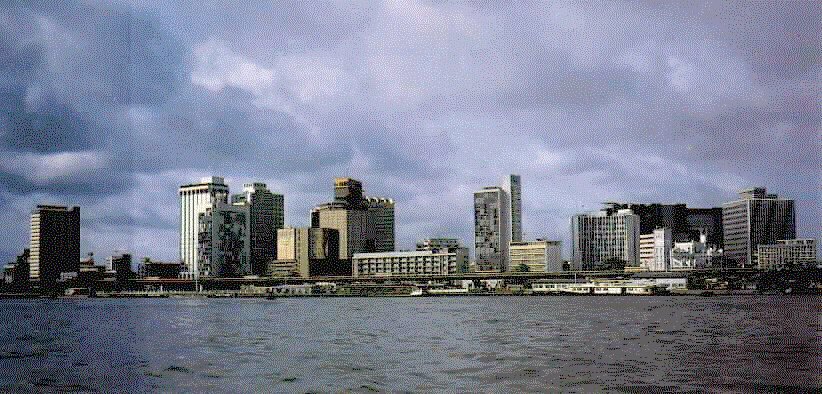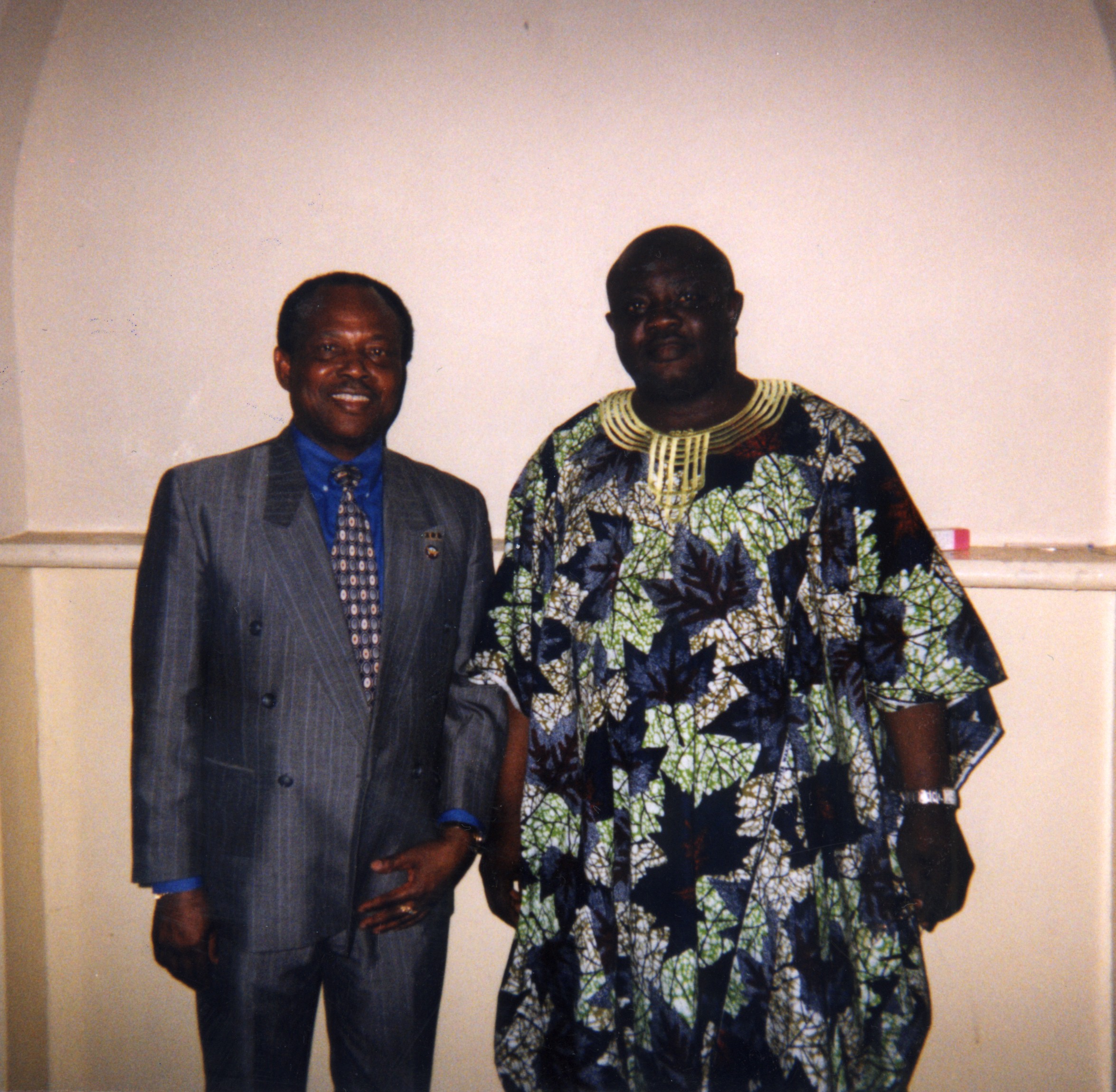 |
|
|

Welcome to your web site!
Lagos Night Life ( NightLife ), RMC is an Inter - City Cultural Communications
web site program between the cities of Lagos, Nigeria, and Ithaca, New York, USA. Additions and suggestion to the content
on this web site by the citizens of this great African city is most welcomed, and is encouraged by the cultural democratic
principles to which this site is dedicated.
Mr. Roger M. Christian
Editor.
Night Life ( NightLife ), RMC InterCultural Communications Network.
|
|
|

|
| Prof. Austine Esogbue and the Mayor of Lagos, Alhaji Luckmon Ajose. |
|
|
Lagos
From Wikipedia, the free encyclopedia

Lagos (pron. IPA: [ˈleɪgɒs], or IPA: [ˈlɑːgəʊs] overseas) is the most populous city
in Nigeria and indeed Africa (depending on the definition) and one of the ten most populous cities in the world. Lagos city is a huge metropolis with its population spread along the Nigerian coastline and upon the islands to the southwest
that form an archipelago just off the mainland.
There is a school of thought insisting that Lagos is not a single city as popularly indicated, but rather an amalgamation
of several lesser towns and smaller settlements into a greater Lagos metropolis. Historically, the name Lagos referred
to the smaller island city that is popularly and locally known as Eko. The mainland, on the other hand, comprised several
separate towns and settlements such as Ikeja, Surulere, and Mushin. In the wake of the 1970s Nigerian oil boom, Lagos experienced a population explosion, untamed economic growth, and unmitigated
rural migration. This caused the outlying towns and settlements to develop rapidly, thus forming the greater Lagos metropolis
seen today. The history of Lagos is still evidenced in the layout of the local governments which display the unique identities
of the cultures that established them.
Today, the word Lagos most often refers to the metropolitan areas which include both the Island and mainland suburbs
of Lagos State. Lagos has grown from a small Yoruba city-state , and undergone periods of domination by two European powers, to become the commercial and population center of Nigeria. As only two censuses (in 1972 and 1991) have been taken since independence, estimates of its population vary considerably, but generally range
from 12 to 18.5 million people,[citation
needed] making it one of the two most populous cities in Africa along with Cairo.
Lagos is also the former capital city of Nigeria; it has since been replaced by Abuja. Abuja city officially gained its status as the capital of Nigeria on 12 December 1991, although the decision to move the federal capital had been made in decree no. 6 of 1976.
|
|
 |
|
|
|
 |
|
Here we may display a picture of this month's special:
 |
 |
|
|
|
|
103 West Seneca,
Suite 206A,
Ithaca, New York
14850
USA
Email:
607 - 279 - 9945

|
|
 |
 |
|
 |
|
|
|
|
|
Please get in touch to offer comments and join our mailing list for sales and specials!
You can e-mail us at:
Tri Falcon and Dove Productions * 103 West Seneca, Suite 206A * Ithaca * NY * 14850
* USA *
|
|
|

